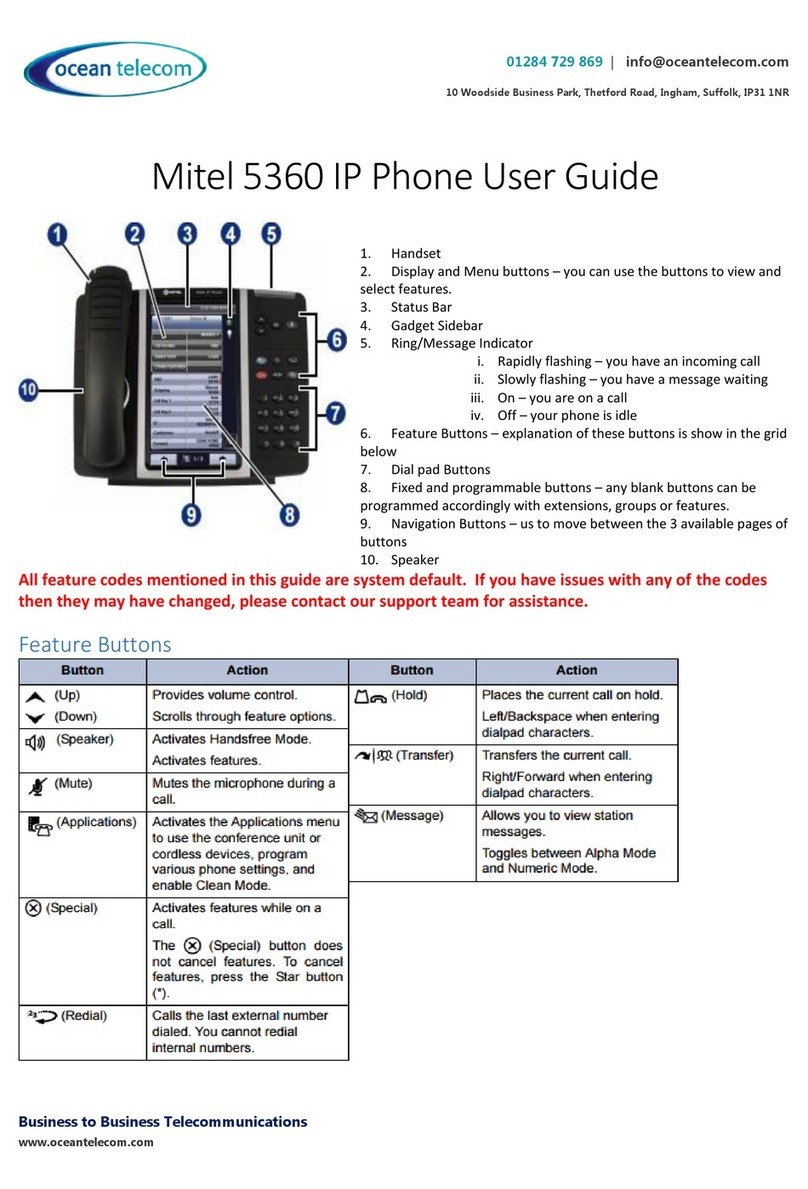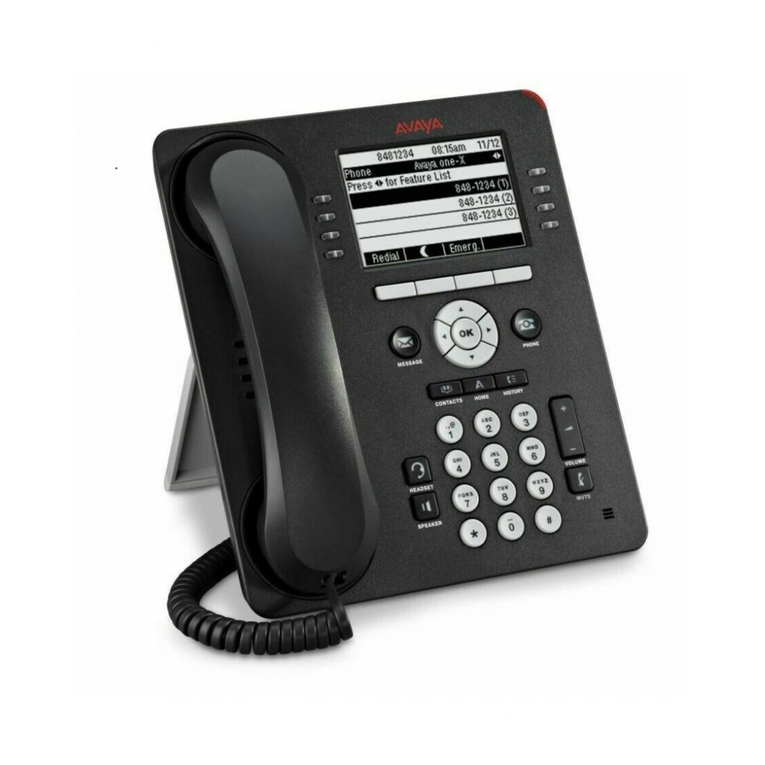Mitel Base Station User manual
Other Mitel IP Phone manuals

Mitel
Mitel MiVoice 5360 User manual
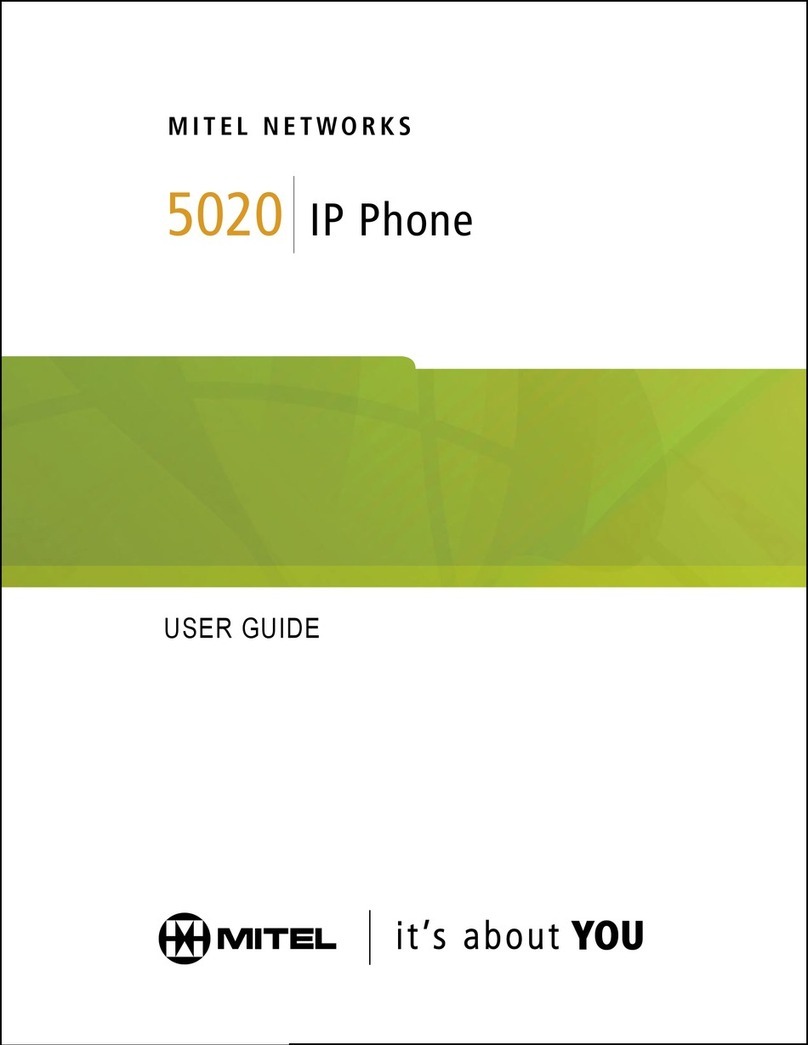
Mitel
Mitel 5020 User manual
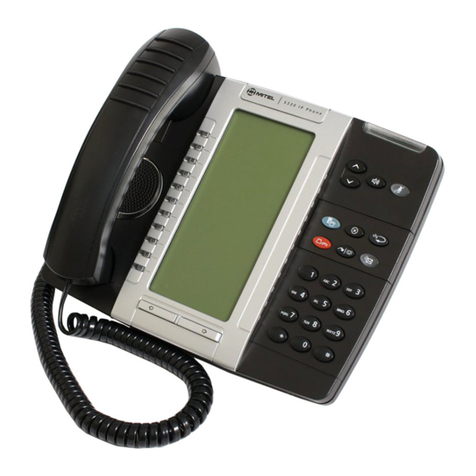
Mitel
Mitel Mitel 5330 User manual
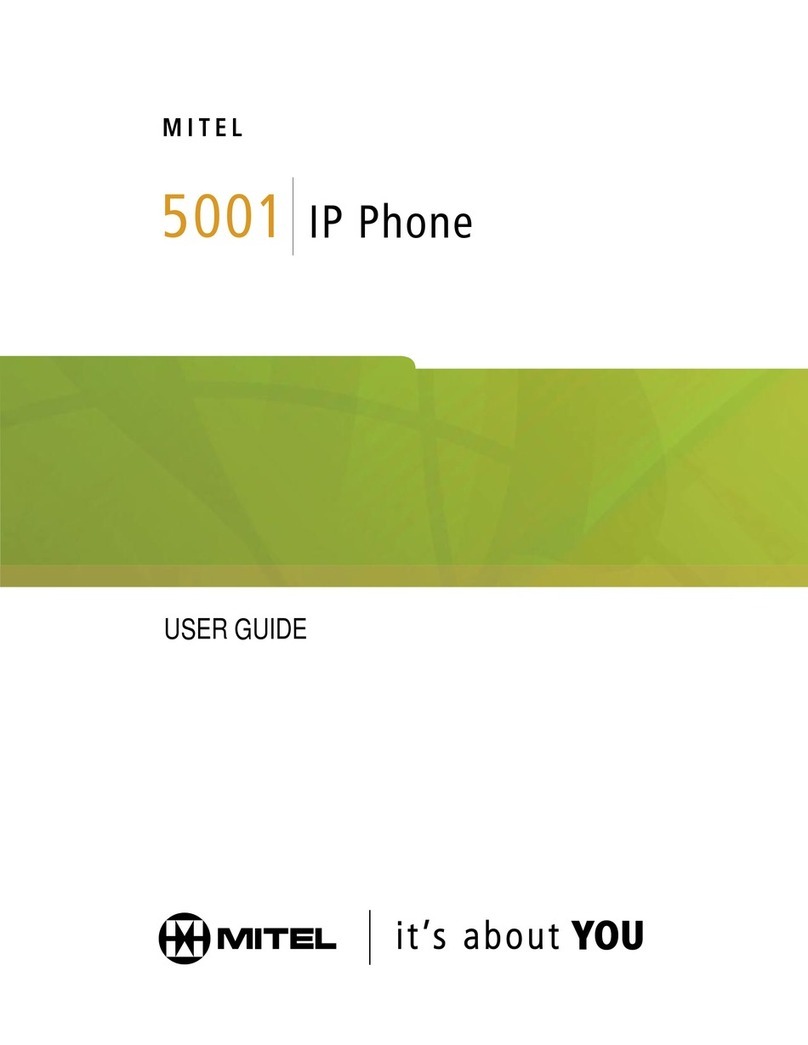
Mitel
Mitel 5001 User manual
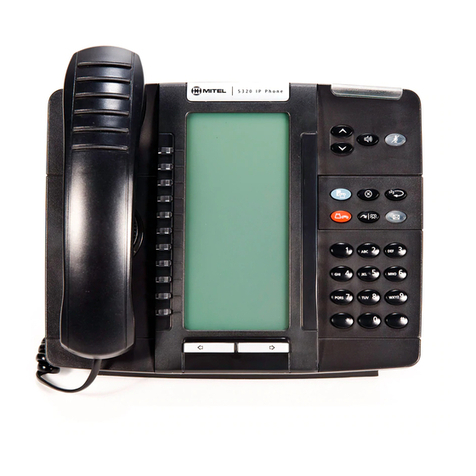
Mitel
Mitel SIP USER AND ADMINISTRATOR GUIDE 5320 Service manual

Mitel
Mitel 5020 User manual
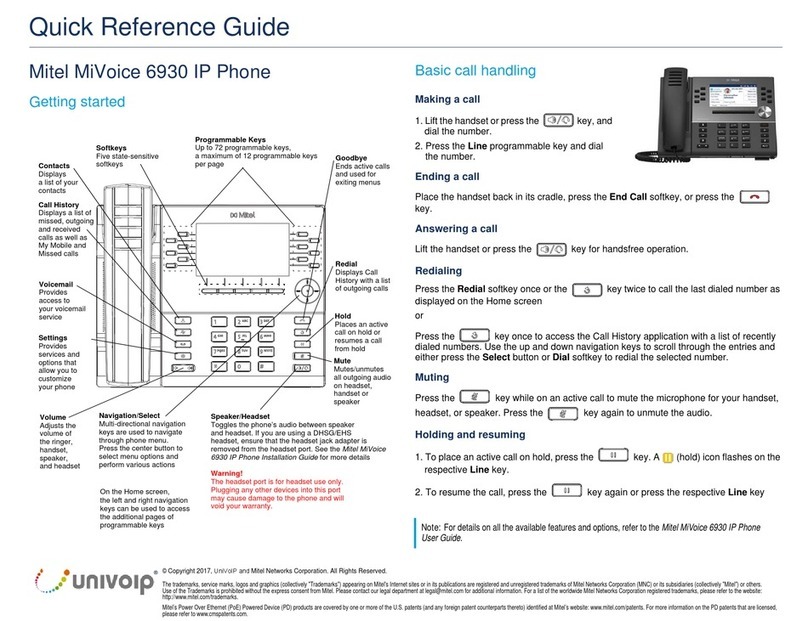
Mitel
Mitel MiVOICE 6930 User manual
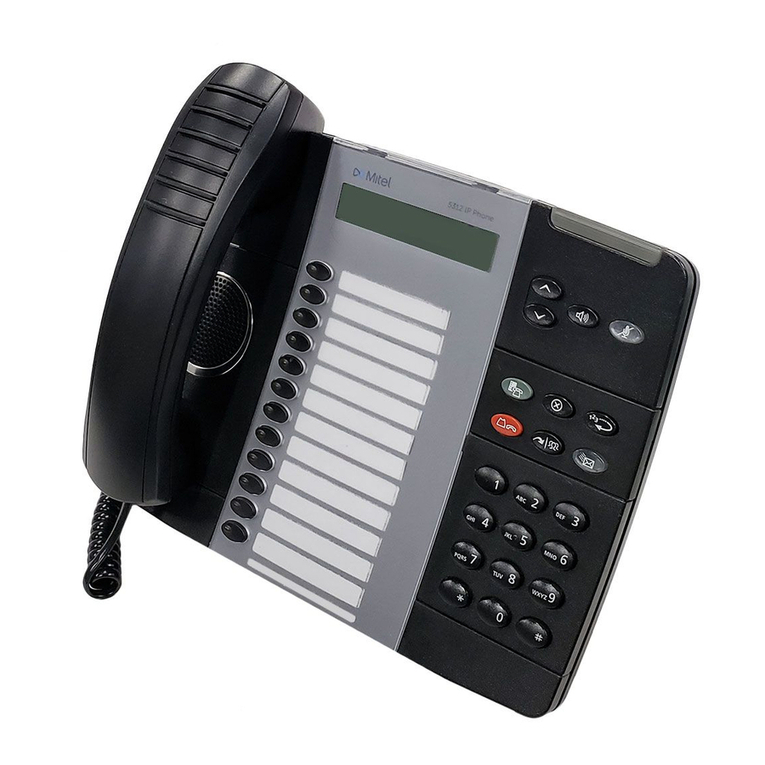
Mitel
Mitel MiVoice 5312 User manual
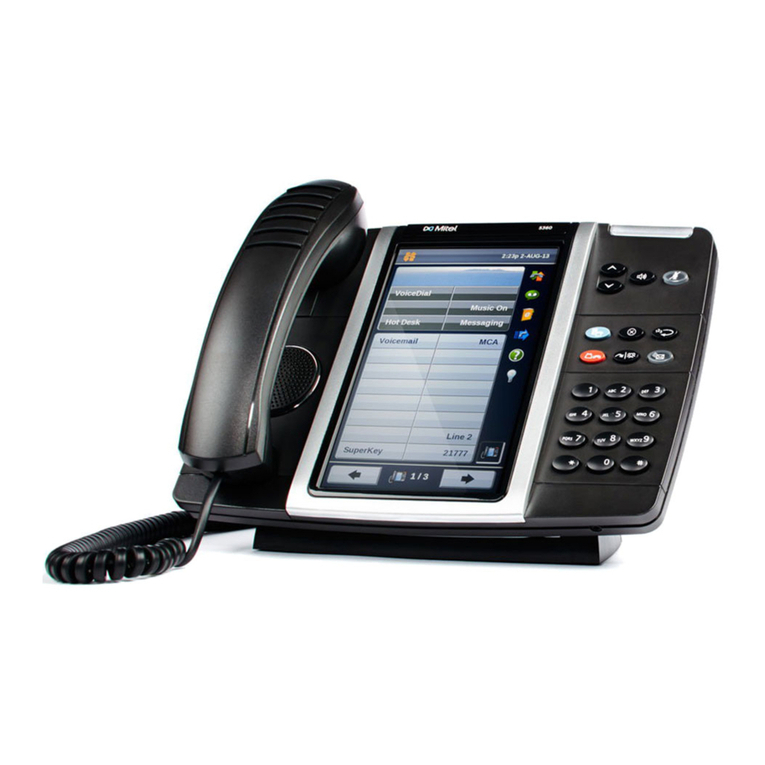
Mitel
Mitel MiVoice 5360 User manual

Mitel
Mitel MIVOICE OFFICE 250 User manual

Mitel
Mitel MiVoice 6900 Series User manual

Mitel
Mitel MiVoice 5360 User manual

Mitel
Mitel 5205 User manual

Mitel
Mitel 5020 User manual
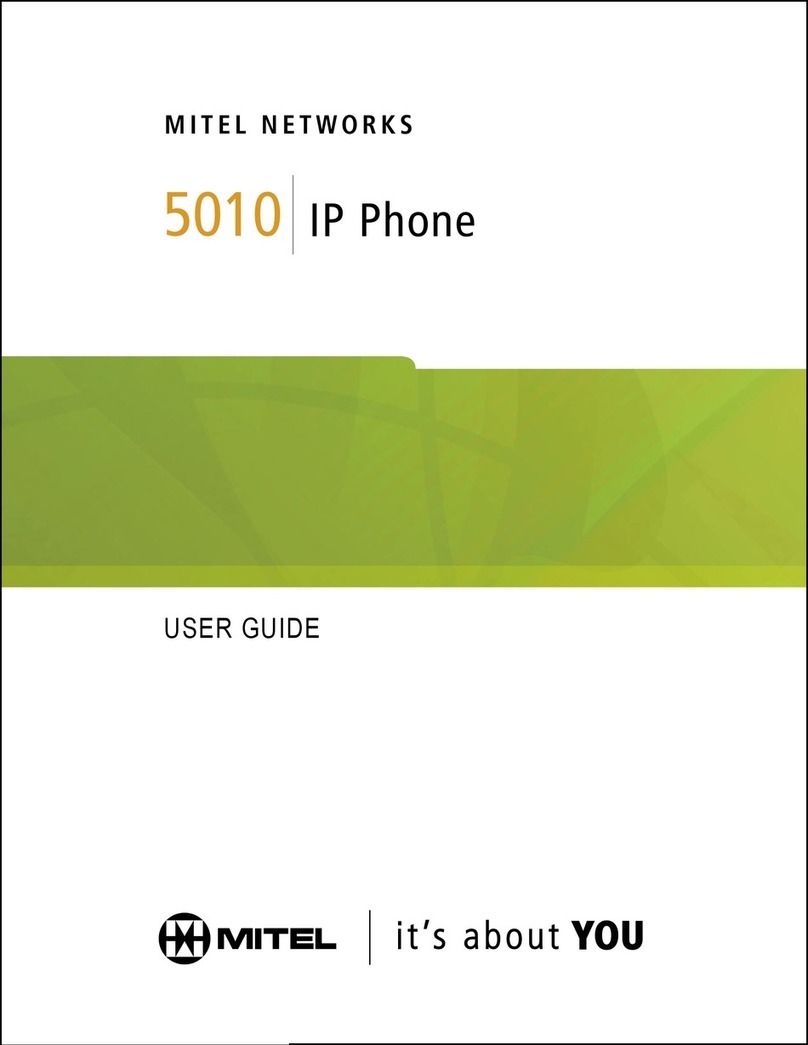
Mitel
Mitel NETWORKS 5010 User manual
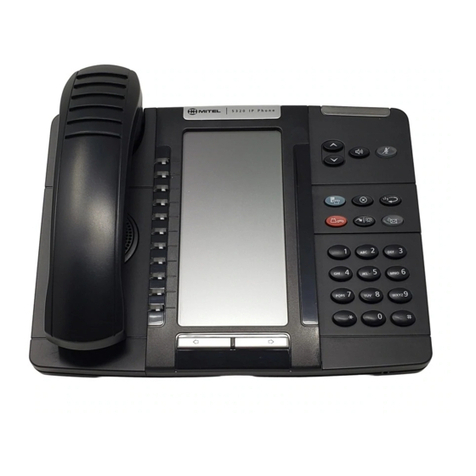
Mitel
Mitel 5320 Instruction manual
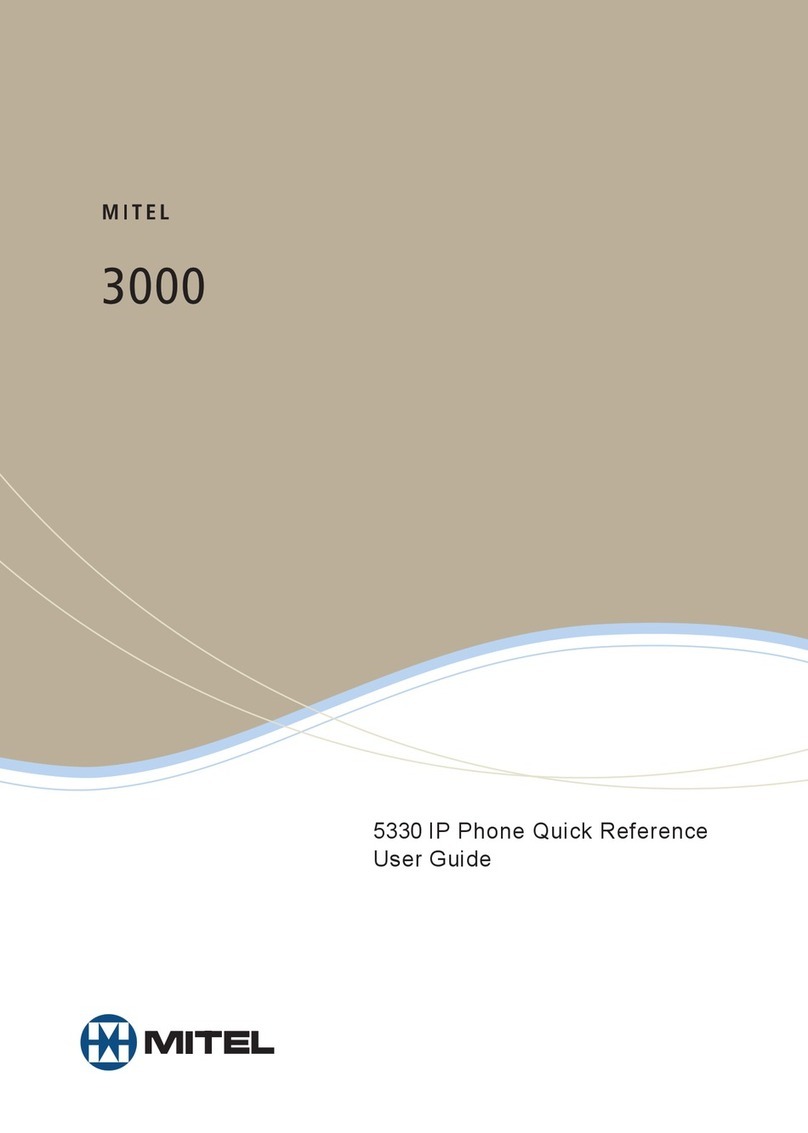
Mitel
Mitel 3000 5330 User manual
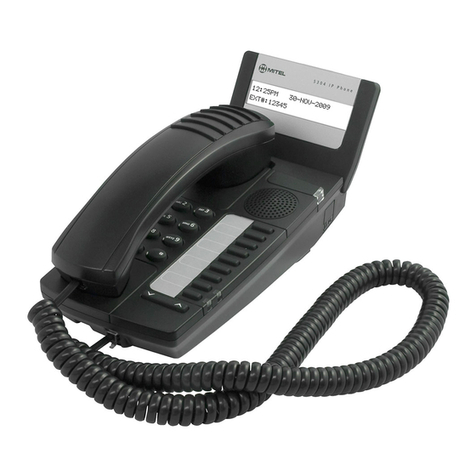
Mitel
Mitel OfficeConnect 5304 User manual
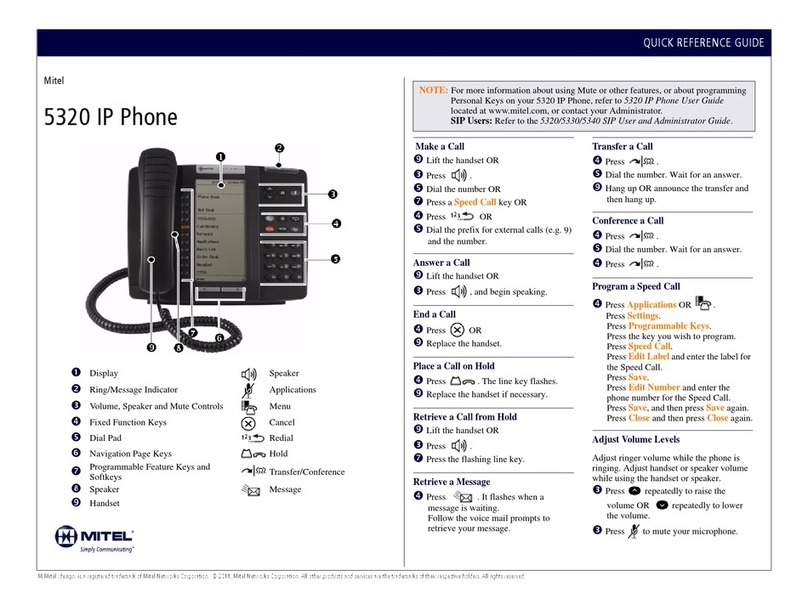
Mitel
Mitel 5320 User manual

Mitel
Mitel MIVOICE OFFICE 250 User manual
